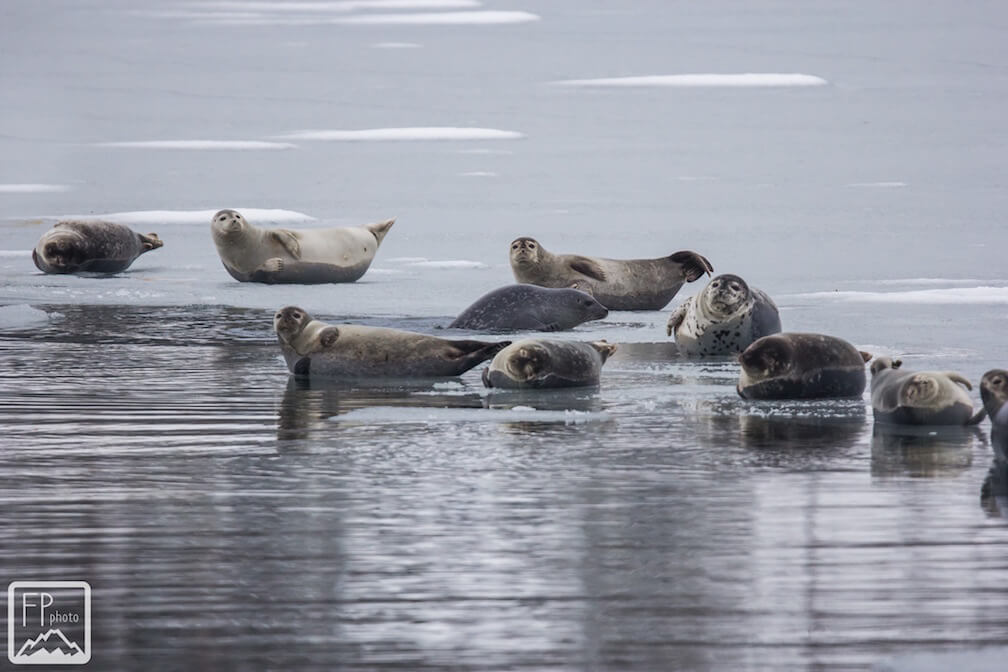Between two snowstorms, all eyes turn to the waters of the St. Lawrence, scanning the horizon for marine mammals. It was during this lull that a resident of Franquelin saw dozens of seals basking on the icy shores. “It’s hard to say exactly what species, as they’re a little too far to be sure!” confides the local.
In Gaspé Bay, an observer spotted harbour seals last Thursday. She tallied about thirty resting on the pack ice. Two days later, between Cap-des-Rosiers and L’Anse-au-Griffon, she encounters more, about twenty this time. Much farther upstream, a GREMM employee reports the presence of “a curious little harbour seal on a big chunk of ice in Tadoussac Bay.”
Kings of the seas and sky
But pinnipeds weren’t the only ones turning heads this week: Seabirds were also plentiful! In the Côte-Nord region, mariner Jacques Gélineau reports the presence of common mergansers (Mergus merganser) at Longue-Pointe-de-Mingan. In the drakes of this duck species – the largest in Quebec – the head and middle of the back are a bright forest green, which contrasts with the rest of their entirely white body and deep red beak. These ducks do not necessarily migrate in winter and may reside in the same place year-round, but will move to a place where the water is not completely covered with ice.
For one observer out in the Gaspé, “in Pointe-Saint-Pierre and Percé, the stars are the king eiders.” The males of this species (Somateria spectabilis) are spectacular in their plumage. Their angular heads are tinged with sky blue, green and bright yellow tones, making them easily distinguishable from their cousins, the common eiders. The females, more discreet, are mottled brown in colour. These rulers of the oceans and skies will return to higher latitudes once the ice melts, ceding their Laurentian throne to the whales with the arrival of spring.
Have you seen a seal or a whale?
Share your observations and photos by writing to us at [email protected] or on our Facebook page.







